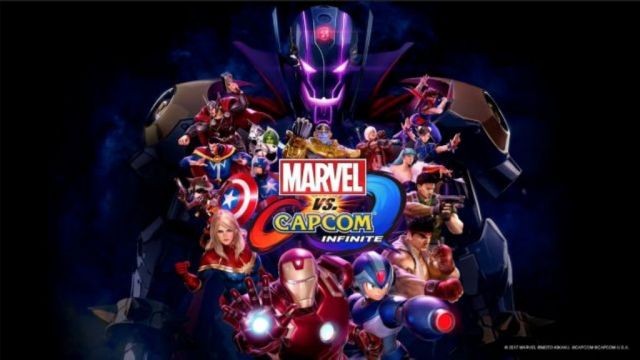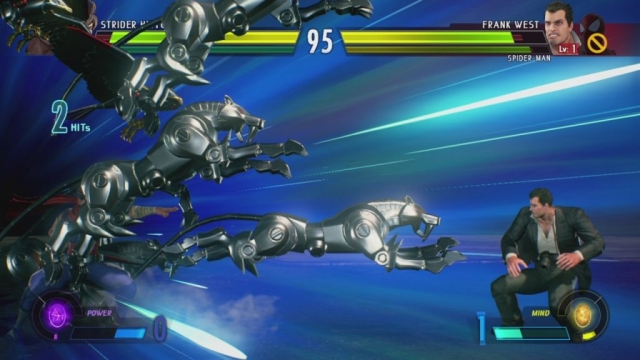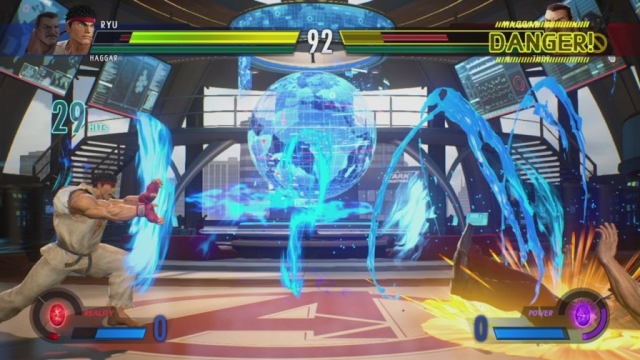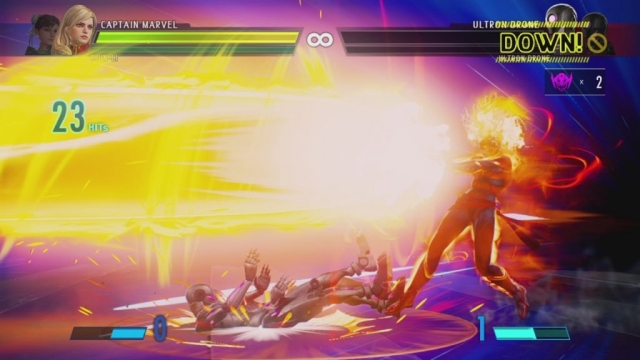Marvel vs. Capcom: Infinite

Capcom’s “vs” series has been going strong for over two decades now. The debut entry with X-Men vs. Street Fighter got the ball rolling, and received rave reviews in both arcades and on the Saturn. Since then, Marvel vs. Capcom has become a signature franchise for not only some of Capcom’s well-known and lesser-known characters, but also a way for Marvel’s extensive cast of characters to shine too. The first entry was a solid hit in arcades, while the Dreamcast version became the stuff of legend. Its scarcity on the DC, PS2, and Xbox drove its popularity up, resulting in a re-release on the PS3 and Xbox 360 for that generation of systems. Those consoles also played host to the highly-anticipated Marvel vs. Capcom 3 and its Ultimate revamp.
MvC 3 was an incredible game that managed to take all of the fast-paced action that the series was known for and give it a more modern finish. Instead of going with HD sprites, polygonal models were made that retained enough of the franchise’s comic book proportions while also looking realistic. The core gameplay was essentially the same as prior entries, just with even more chaos. Infinite changes up the formula more drastically than any prior entry in the series, which will certainly prove to be a divisive decision for the fanbase. The latest entry swings for the fences when it comes to trying new things, and knocks it out of the park more often than not.
The three versus three gameplay has been altered to now be two versus two, and assist characters have been removed entirely. Instead, you can augment your team with one of the six infinity stones that drive the story along. The soul stone gives you the power to launch a health-draining attack, while the time stone speeds up the action. The space stone brings foes closer to you so they can’t run and hide from battle, and the power stone offers up a launcher attack that can enable you to do massive combo damage with both of your characters in tandem. The mind stone grabs your foe and forces them to either be dazed or toss them into the air. This new system allows you to make up for possible weaknesses in a character you enjoy, and ensure that the action is even faster than before.
It keeps the feeling of forcing you to pay attention to your surroundings at all time like the assists did, since you could never tell where they were going to come. However, it also eliminates the cheapness that came from having an assist character to work with and possibly end a battle. Now, you will have to make sure to learn your characters and also the stones to figure out ways to deal more damage with them – or take less damage if one is used against you. The 30-character roster features a solid amount of existing franchise characters alongside newer characters that have had their stock skyrocket thanks to the Marvel Cinematic Universe. Captain Marvel is probably one of the most noteworthy additions, alongside Doctor Strange, X, and Zero.
Fan-favorites like Hulk, Spider-Man, Mike Haggar, Ryu, and Captain America keep things familiar. However, the game is quite notable for being the first entry to lack any of the X-Men cast. While rumors behind the reasoning involve Disney not wanting them in at the time of the core game’s development may or may not be true, the end result is that fans are left with a damaged roster. They aren’t set to be part of any announced DLC either – but that could change further down the line if an agreement can be reached to have them in the game. Until then, fans of Wolverine in the franchise are out of luck. Fortunately, the existing roster is pretty strong – even if characters like Nemesis really could use some improving from prior entries. In that particular instance, he is so one dimensional and slow that both fighting as and fighting against him is a slog.
This is the first story-heavy game in the series, and it’s a mix of good and bad. The actual story has a large scale to it that at least attempts to explain all of these characters coming together for a greater cause. The universes are in peril thanks to Sigma Ultron, so everyone unites to try and not only topple him – but unravel mysteries involving their own universes. The story isn’t all that absorbing – but it does get the plot from point A to B nicely and the voice work is quite good. The voice cast used for prior games has returned and definitely benefits from having a real story to work with instead of just spitting out voice quips. The mode doesn’t just give you a story, but also allows newcomers to learn the ropes of the fast action and ensure that they can at least hold their own against CPU-controlled foes. It is marred by some terrible load times though. It takes at least a minute to go from story scene to a battle. Then, there is an additional 40 or so second wait while the actual battle loads up.
Fortunately, that’s the biggest core problem that faces Infinite. The graphics are quite good – with the chaos on-screen never causing a dip in the framerate. The actual characters have a lot of detail, even if some really could use some work with their stilted animation – like Nemesis. Spider-Man’s essence really comes through with his body language, while Strider is darn near perfectly-showcased visually here. Some of the characters look a bit odd though – with faces that don’t seem quite right, or strange proportions. With Mike Haggar as a pro wrestler, having a gigantic chest makes sense. Captain America though, looks like a giant action figure in the worst ways with a bulging chest that doesn’t fit anything else. While characters can have issues, the environments look outstanding universally. There is a lot of depth in them and it feels like you’re fighting in a real-world setting instead of an enclosed area with nothing in the world around you. Having some environmental interaction would be nice, but would probably make tournament play tricky – so it’s understandable to not have that in this.
Infinite’s soundtrack is more diverse and definitely more epic than prior games. It’s usually mixed in pop with some jazz and goes for a more cinematic-sounding score here. Battles feel like they are now all high-stakes affairs, and there isn’t anything in the soundtrack or voice work that feels too corny to work against the in-game drama. The sound effects are great too, with smaller versions of projectiles sounding like they’re doing less damage than their heavy button-pressing or charging variants. Of course, the big bruiser types like Haggar’s shots also sound like they’re more punishing than blows from Captain Marvel.
Marvel vs. Capcom: Infinite succeeds in some major ways. The gameplay is faster and more intense than ever before, even with a smaller roster. Aside from that, the story mode does what it needs to and manages to both tie events together while teaching players, in a fairly organic way, how to properly play the game. The graphics are definitely not everyone’s cup of tea, but deliver more that works where it counts even if some animation and character model work would have helped the overall presentation a bit. The soundtrack is probably the best in the series – it may not be as outwardly catchy, but it’s far better for the actual game and makes each battle seem important.
Reviewed By: Jeremy Peeples
Publisher: Capcom
Rating: 90%
——————————————————————————–
This review is based on a digital copy of Marvel vs. Capcom: Infinite for the Xbox One provided by Capcom.
 Game Over Online
Game Over Online
















